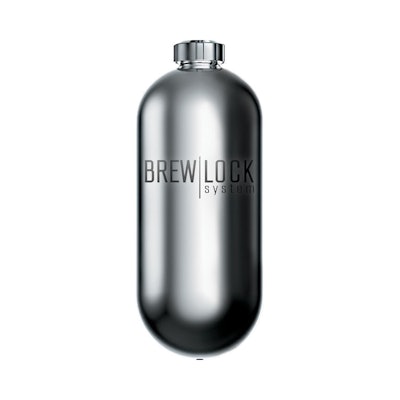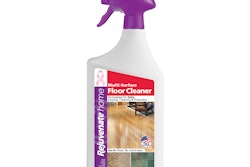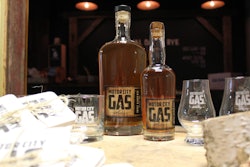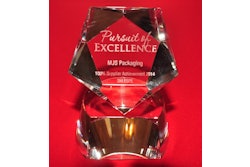Steel keg systems for on-premise beer sales have long been the norm in the industry. The systems deliver very good quality—if maintained properly. When they are not, inconsistent beer quality results. Steel keg systems also come with other drawbacks: the cost of returning the kegs, the expense of the gas and regulator systems needed to deliver the beer to the tap, and the inability to evacuate all of the product from the keg.
Says Joe Pagliaro, Director of Innovation and Packaging at Heineken USA, “The issues have been known for a long time in the industry, but no brewer has ever put the resources behind it to find a solution.” Last year, in response to these challenges, Heineken introduced a new keg system to solve these issues, foremost among them ensuring the quality of its beer once it leaves its facility.
“As a brewer, the way beer is served at any retail location is largely out of our hands,” Pagliaro says. “At Heineken, we are obsessed with quality and will never settle for our beers not being served the way our beermasters intended.”
Introduced nationally in May 2014, the BrewLock PET keg system eliminates many potential fail points of current draught systems, Pagliaro explains. “So long as retailers continue to clean their draught lines, and serve the beer cold and in clean glasses, BrewLock does the rest to ensure the beer the customer is drinking in the U.S. tastes as good as if they are drinking from the filling line at the brewery.”
Brewery-fresh beer
In engineering the BrewLock, Heineken’s primary objective was to create a system that could deliver brewery-fresh beer, safely. “Our goal was to ensure to the best of our ability that the beer hitting the consumer’s lips tastes the exact same way every time, and that at the end of the keg, we didn’t have a pressurized plastic balloon that could potentially harm someone,” Pagliaro explains.
The BrewLock is not the first plastic keg. But Heineken felt each competitive system had elements that could be improved upon in its own design. The result is a multi-component system that comprises two 20-L PET bottles; a valve made from polybutylene terephthalate (PBT)/nylon/nitrile rubber (NBR)/steel; a PET collar; and a polypropylene protective cap. “Each component is engineered to extremely strict tolerances to ensure every keg works perfectly, every time,” says Pagliaro.
The main components are the two PET bottles. These are designed with one inside of the other. The outer bottle is clear PET; the inner—a less rigid, collapsible structure—is silver and contains additives to offer the best protection to the beer, including pigments to protect from a full spectrum of light waves and oxygen scavengers to prevent oxidation, for example. These additives enable up to a six-month shelf life for the beer. The bottles are currently injection stretch blow molded off-site. Several suppliers have lent their technical support, but Heineken chooses not to name them. In the coming months, Heineken plans to commission in-line bottle blowing to increase flexibility and efficiency. The keg system also comes with a proprietary air compressor.
The system works as follows: Once the kegs have been sufficiently cooled at the customer site, a proprietary EasyFit coupler is attached to the keg. The compressor—which is about the size of a shoe box and is plugged into any normal electrical outlet either inside or outside of the cold room—automatically pressurizes the space between the two bottles to a prescribed pressure with normal ambient air. When the tap handle is pulled, the coupler opens a valve to the inner bottle whereby the pressure between the bottles squeezes the beer out of the inner bottle to the tap. When the tap handle is returned to normal, the valve closes, and the compressor re-pressurizes the space between the bottles. The technology ensures that no outside air, CO2, or mixed gases come in contact with the beer and results in the evacuation of nearly 100% of the beer from the inner bottle.
“The beer can never be affected by oxidation, and it has perfect and consistent carbonation and fine, tight bubbles for the perfect head, or foam,” says Pagliaro.
To ensure customer safety, the coupler that connects the beer line to the keg features passive degassing. This means that when the coupler is detached, the keg automatically degasses itself without the user having to do anything. According to Pagliaro, competing plastic kegs remain pressurized once uncoupled. “While beer quality is always at the top of our list, safety is non-negotiable,” he says. “No matter the benefits of our packages, safety will never be compromised at any cost.”
Additional advantages
Besides being selected for their functionality, the components in the BrewLock system were also chosen for their simplicity, in order to minimize potential failures, as well as their low cost and recyclability. Because the kegs are non-returnable, they needed to be produced with the least costly material that could also be recycled.
Among the sustainability benefits, the keg is 25% lighter than a steel 1∕6 barrel and uses less material, resulting in the shipment of more beer and less packaging. No return trip to Heineken means less fuel is used in transport. In addition, the compact, 20-L keg is shipped in a corrugated case that offers a smaller footprint than a steel keg and can be stacked horizontally when not in use. “The kegs and corrugated boxes are 100-percent recyclable,” says Pagliaro. “The boxes are also made from unprinted kraft pulp and printed with only one color. Combined, we are using less material and energy, which isn’t often the case for such novel innovations.”
In 2013, Heineken did a short test market in Hartford, CT, that resulted in a +10% increase in Rate of Sale. Since the national launch, Pagliaro says the response has been even better. “We exceeded sales targets and installed more than 3,000 tap handles in 2014,” he says. “The Rate of Sale of Heineken draught was plus 25 percent. Perhaps the best testament to the power of BrewLock though is that sales of Heineken bottles in accounts where BrewLock was installed was plus 13 percent.”
In the U.S., Heineken currently offers on-premise customers its Heineken Lager and Newcastle Brown Ale in the BrewLock. In Europe, the company has also launched a sister version, The Sub, for at-home consumption.
See a video of the BrewLock at pwgo.to/1502



























